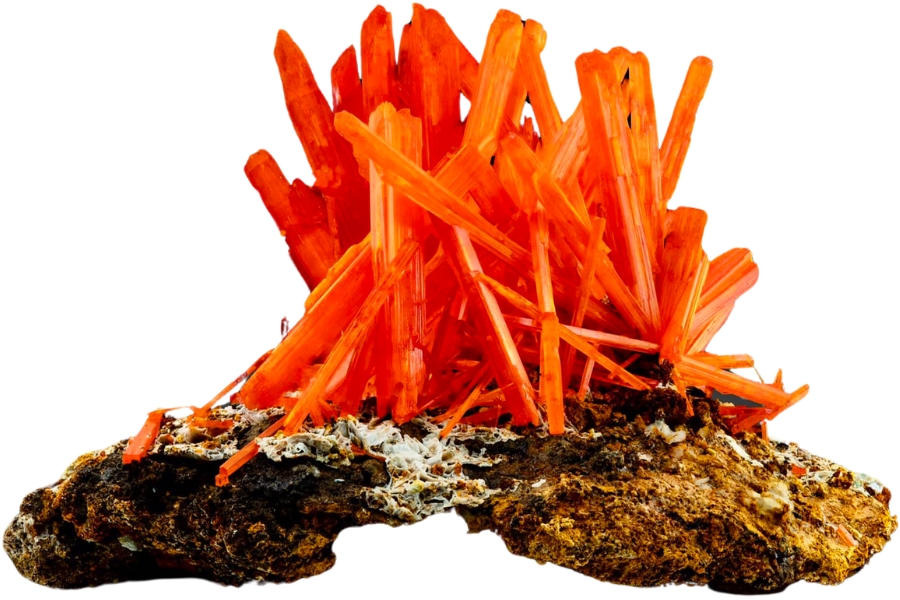Orange crystals are like little pieces of sunshine. During your rockhounding adventures, nature might surprise you with these vibrant treasures, including all shades of orange.
You have light orange crystals that have soft, peachy tones. Then there are the dark orange crystals that display bold and fiery orange hues. In the middle of these two are crystals that share the color of a ripe, juicy orange.
Excited to get to know these sunny wonders and be amazed by their hues? Let’s go through the most vibrant orange crystals that you need to see!
Our Favorite Orange Crystals
First off, we’ll share our favorite orange crystals and what makes each of them unique and special. Just by looking at their photos, you’ll understand why they made it to our favorite list.
Amber

Amber has a history as old as time itself. Formed from tree resin millions of years ago, it often captures tiny bits of ancient life, like leaves or insects.
Throughout history, people have treasured it for its natural beauty and the intriguing glimpses it offers into the past.
Amber’s value comes from its unique colors, ranging from pale to deep oranges, and its ability to preserve history in a beautiful, tangible form.
It’s been used in jewelry, decorative items, and even in healing practices. It’s a window into a world long gone, making it a prized and mesmerizing gem.
Citrine
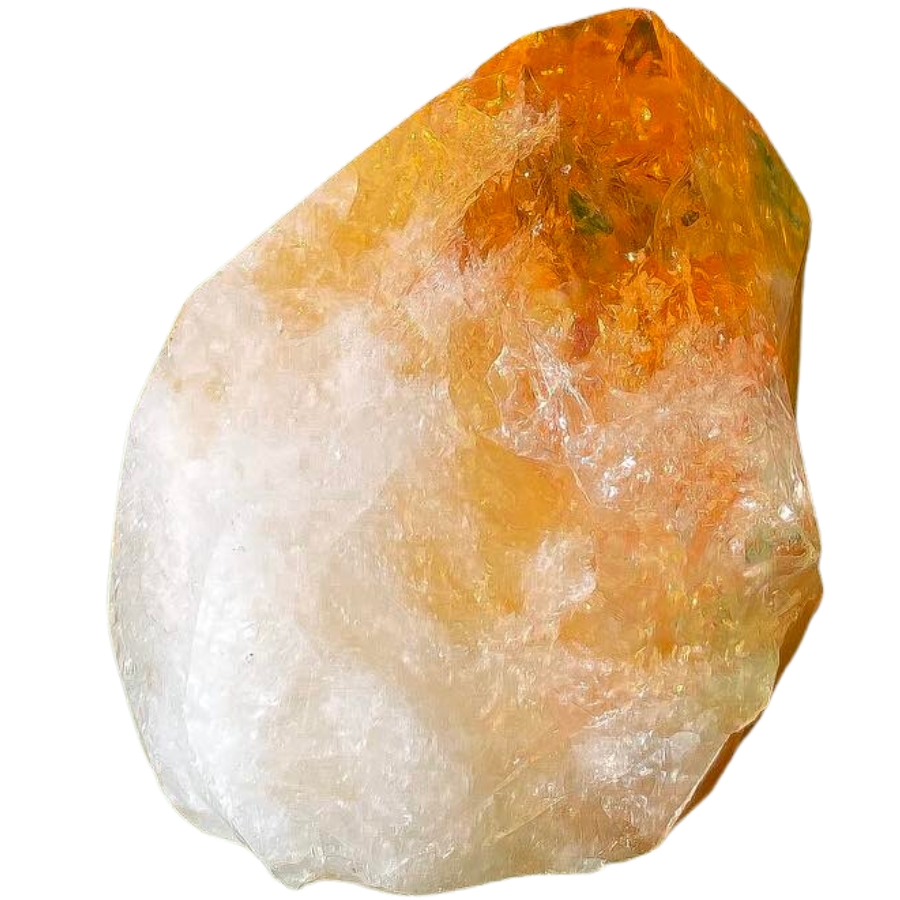
Citrine is a dazzling yellow-to-orange crystal that’s been cherished for thousands of years.
Ancient Greeks used it for stunning jewelry, while Romans crafted beautiful intaglio work with it. In the Middle Ages, it was believed to protect against snake venom and evil thoughts.
What really stands out is its bright, sun-like color, which has made it popular in all kinds of jewelry. Its affordability adds to its appeal.
Citrine’s price is often lower than other gems, making it a favorite for both new and experienced gem enthusiasts. It’s a gem that combines beauty, history, and affordability all in one!
Imperial Topaz
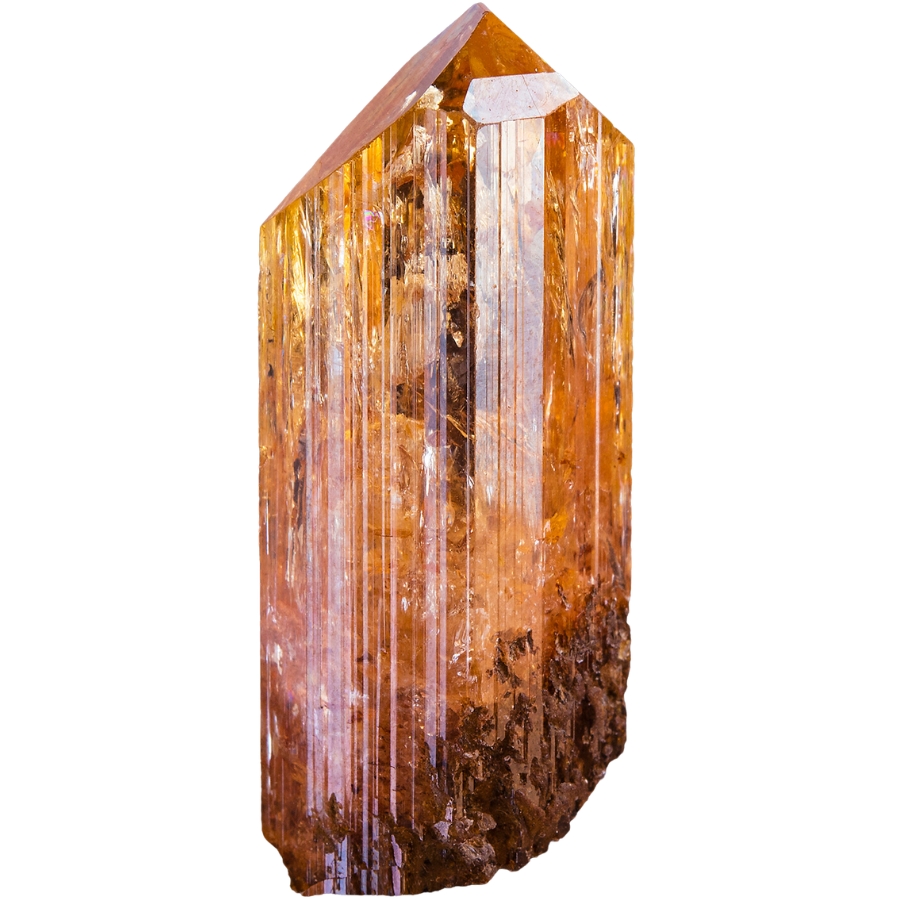
Known for its stunning shades of orange with pink undertones, imperial topaz has a rich history dating back to 18th-century Russia.
Found in the Ural Mountains, it was so prized that only the Russian royal family could own it for a time. This exclusivity skyrocketed the worth of imperial topaz, making it a symbol of luxury and status.
Its hardness makes it perfect for all kinds of jewelry, enduring daily wear while still sparkling beautifully.
People value imperial topaz for its rarity and uniqueness as an orange crystal, which isn’t found in many other gems.
Sunstone
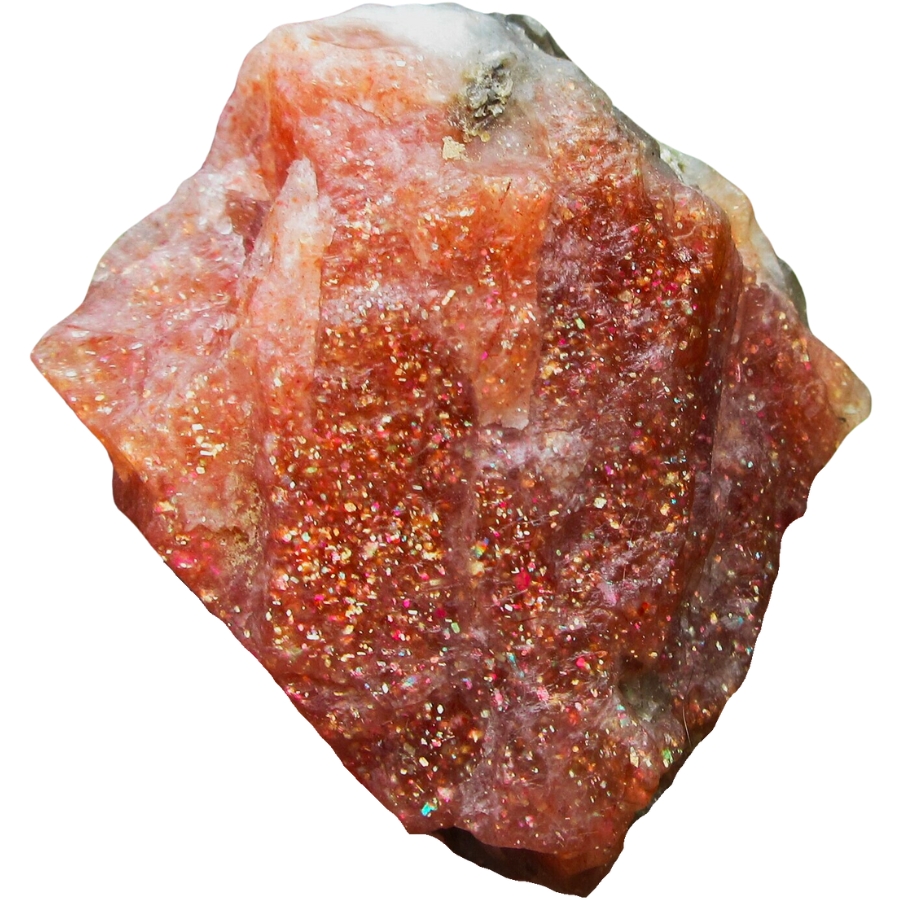
With its glittery, sun-like sparkle, sunstone has been admired for centuries.
Native Americans first discovered it in Oregon, using it in trade and decoration. In Norse legend, it was believed to navigate the seas.
What makes sunstone so special is its aventurescence, a shimmer caused by tiny plate-like minerals inside it. This gives it a magical, glowing effect, like sunbeams trapped in a rock!
Suntone is mostly used in jewelry, where its unique sparkle really shines. People value it for its distinctive glitter and its range of colors: it can be a soft pink and red to a bright orange crystal. It’s like wearing a piece of the sun!
Mandarin Garnet
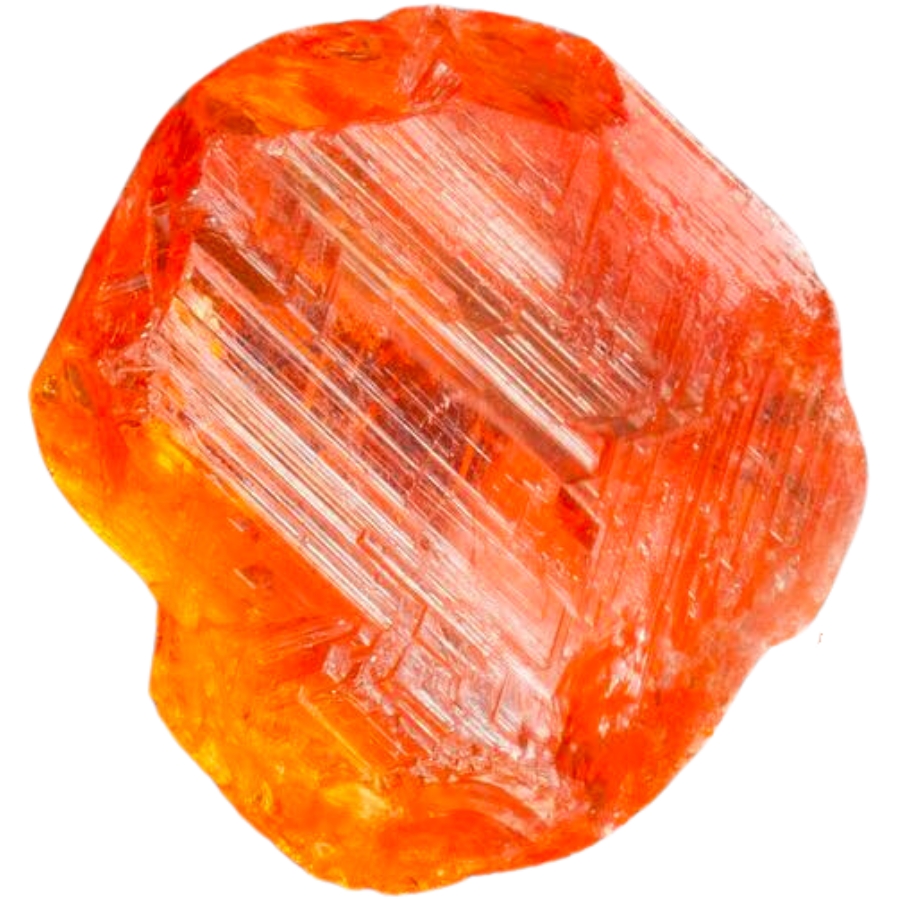
Mandarin garnet, a gemstone that lights up with an intense orange hue, was first discovered in the early 1990s in Namibia. This rare find quickly captured the attention of gem enthusiasts around the world.
Known for its brilliant color, mandarin garnet stands out in the garnet family, which usually features reds and purples.
It’s mainly used in high-end jewelry, where its bright, cheerful color adds a stunning touch.
The value of mandarin garnet comes from its rarity and the vividness of its color. It’s not just a gem; it’s a piece of natural art.
Orange Diamond
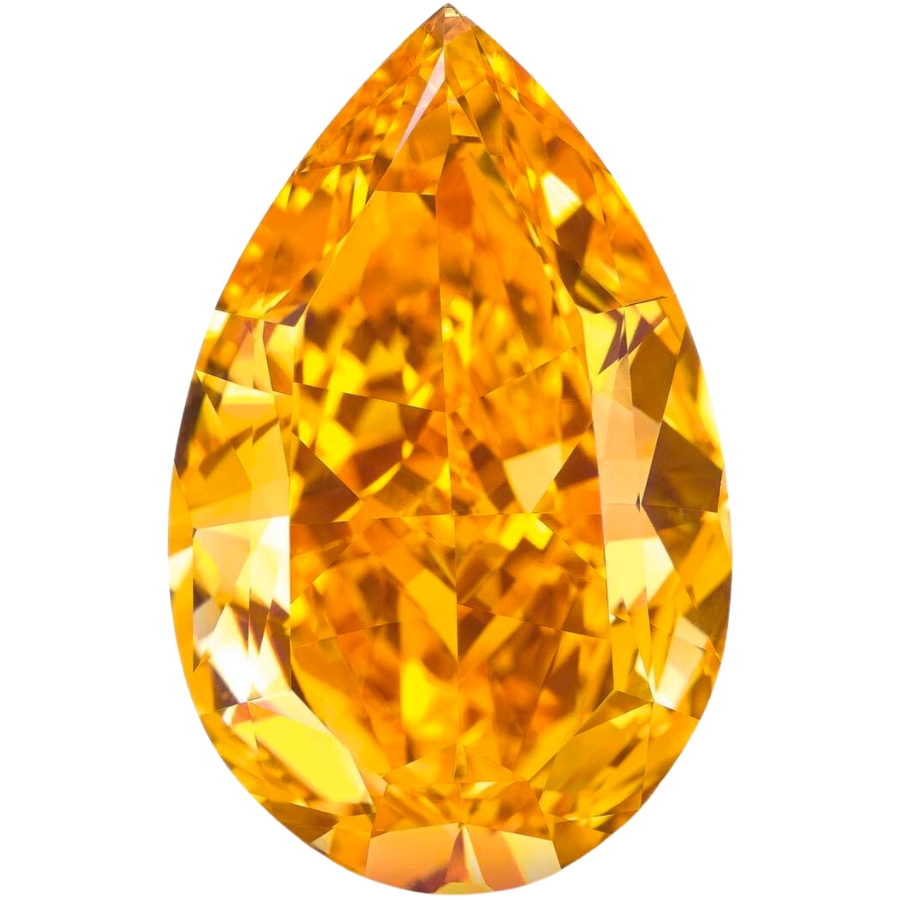
Hailed as some of the rarest and most dazzling gems, orange diamonds have been treasured for their unique color and brilliance.
These extraordinary diamonds get their warm, sunny hue from the presence of nitrogen atoms during their formation.
Historically, they’ve been the stars of royal jewelry and exclusive collections. Their use in stunning pieces showcases their mesmerizing color and sparkle.
The value of orange diamonds lies in their rarity and the intensity of their color. They are also symbols of luxury and rarity, making them incredibly sought after.
Dark Orange Crystals
If you prefer bold and fierce colors in your pieces, you might appreciate dark orange crystals. These gems, with their deep, fiery hues, are not just beautiful; they’re also full of fascinating stories and uses.
Carnelian
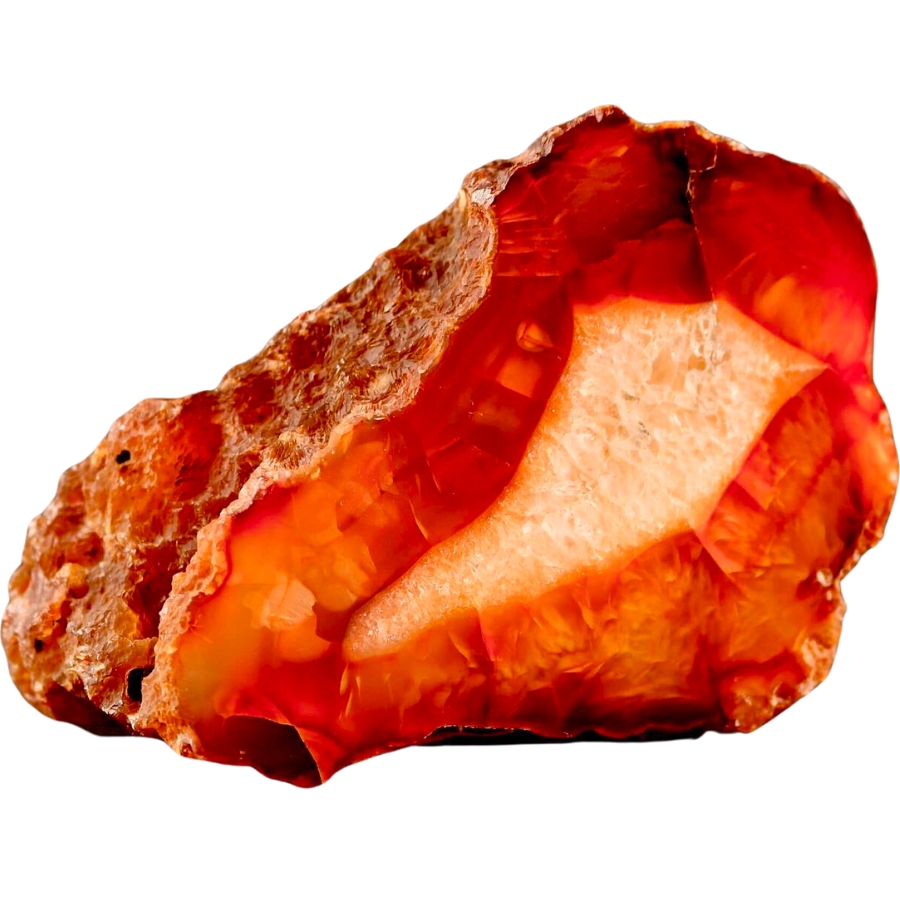
Carnelian is a stunning dark orange crystal that’s been loved for thousands of years.
Ancient Egyptians used it for powerful amulets and jewelry, while Romans carved it into beautiful seals. This gem was believed to bring courage and even help calm anger.
Its rich, warm color, ranging from deep reds to vibrant oranges, makes it stand out. It’s often used in jewelry and decorative items, adding a touch of elegance and color.
Carnelian’s worth comes from its history, beauty, and the belief in its protective and energizing properties.
Crocoite
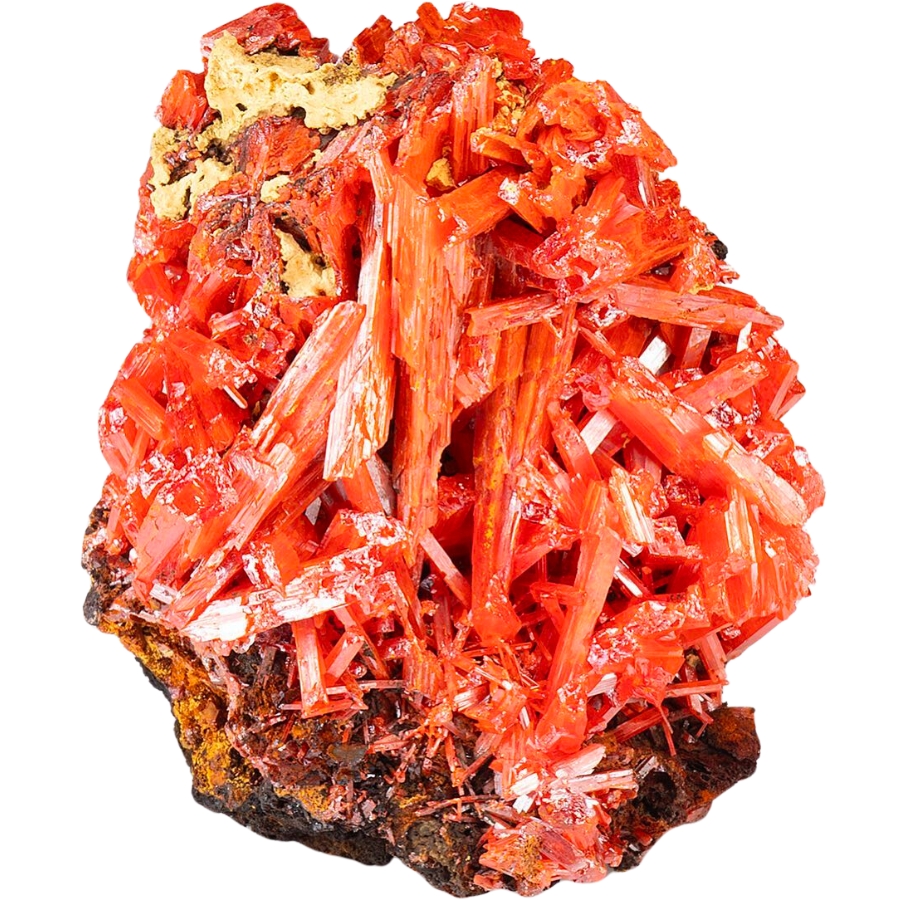
Another striking and vibrant orange red crystal is crocoite. First discovered in Russia in the 18th century, it’s named after the Greek word for ‘saffron,’ reflecting its intense color.
It was initially used to create beautiful pigments for painting. However, due to its rarity and toxicity, its use in paints was limited.
Then, it became famous when it led to the discovery of chromium, which is used to make paints and dyes.
Crocoite is mainly prized for its rarity and stunning beauty. Its needle-like crystals capture the beauty of the mineral world in their fiery hues.
Wulfenite
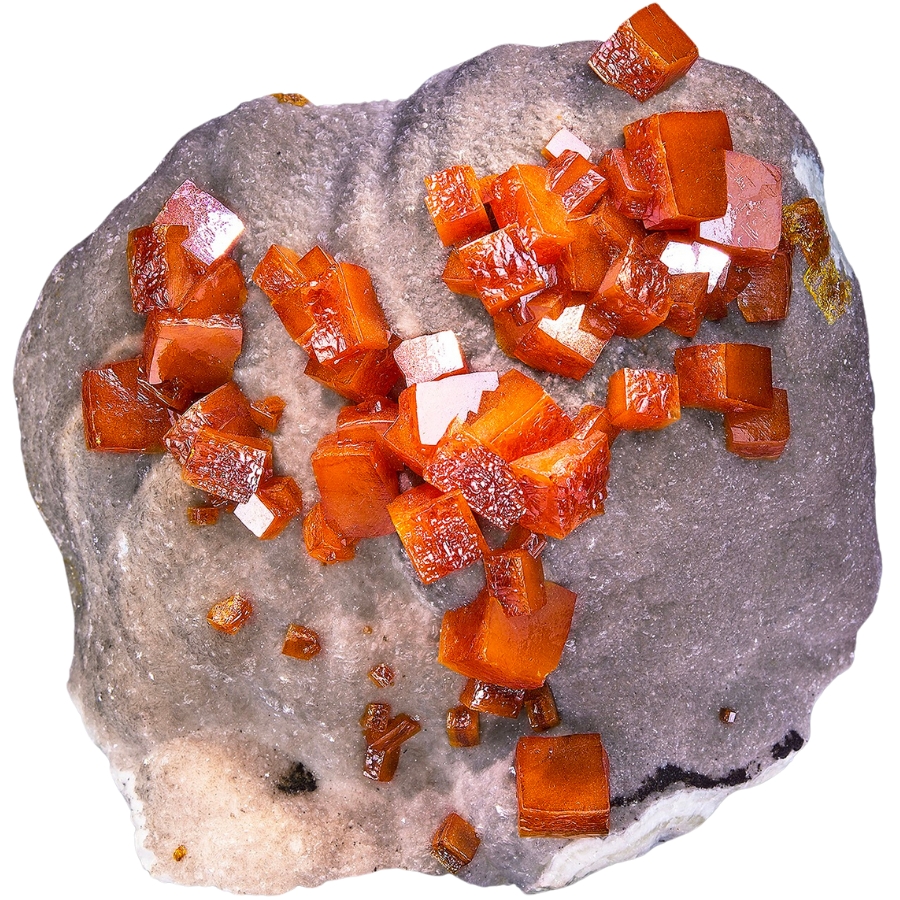
Wulfenite’s history is as colorful as its appearance. First identified in the 18th century, it’s known for its unique, dark orange crystals.
Traditionally, wulfenite was important in mining because it led to the discovery of lead and molybdenum deposits.
But beyond its industrial uses, it captures the hearts of people due to its vibrant colors and distinct, flat crystal shapes. It’s especially treasured for its transparency and the way it sparkles in the light.
Wulfenite’s value lies in its beauty and the amazement it brings to those who admire the natural world’s wonders.
Fire Opal
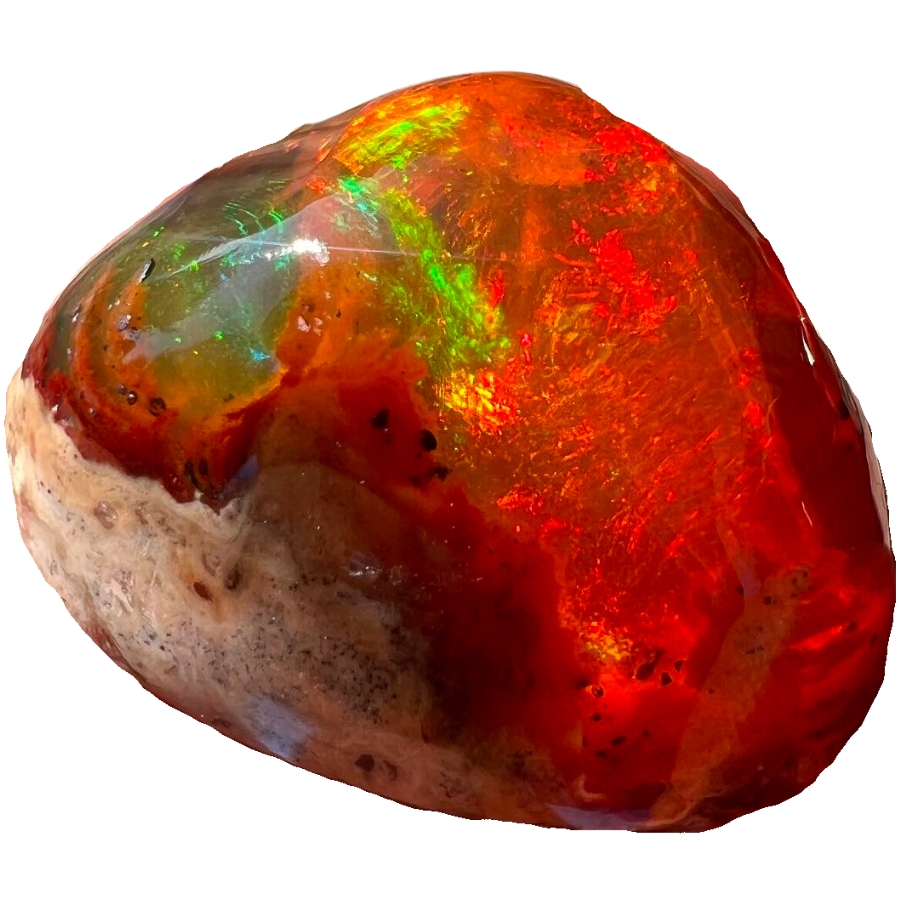
Known for its dazzling orange and red colors, fire opal is like capturing a piece of a fiery sunset in a gem.
Discovered in Mexico in the early 1800s, it quickly became popular for its vibrant colors and mesmerizing translucence.
Unlike other opals, it often doesn’t show the famous opal play of color, but its intense colors make it just as stunning. It has been used in all sorts of jewelry, from elegant rings to stunning pendants.
Fire opal’s value comes from its unique, eye-catching hues, making it a favorite among gem lovers and jewelry makers.
Vanadinite
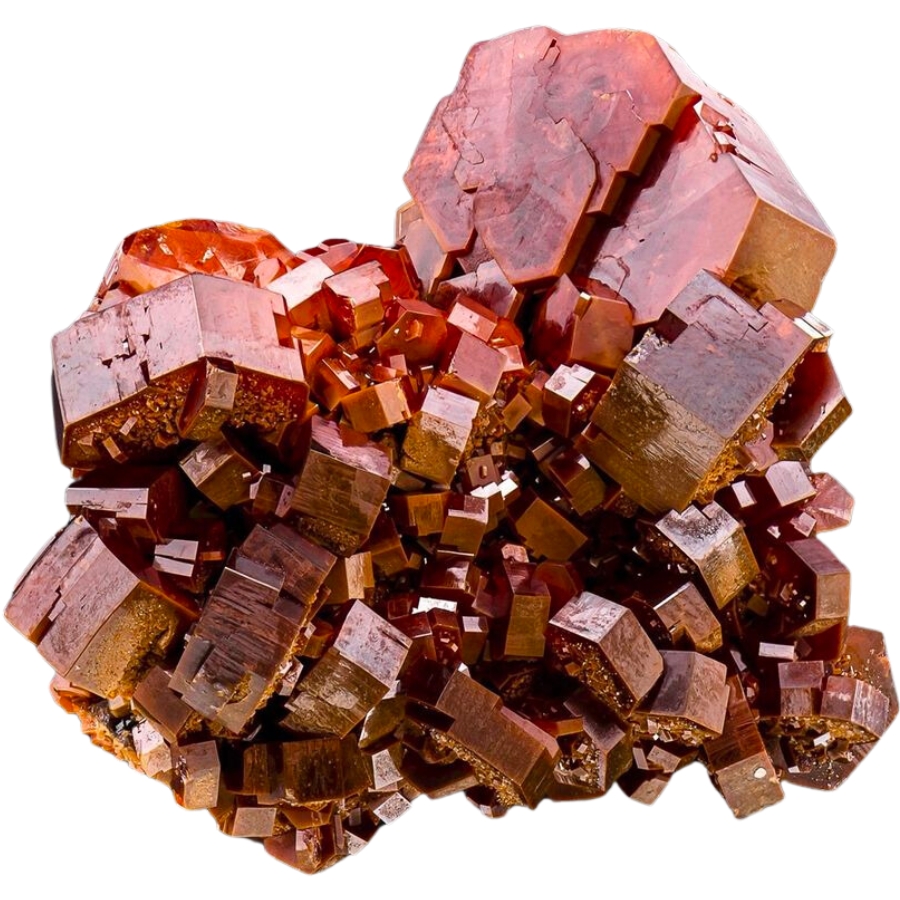
Vanadinite, a mineral with bright orange red crystals, was discovered in the 19th century.
It’s named after vanadium, an element it contains, which is used in making strong steel alloys and in some chemical reactions.
Vanadinite crystals are famous for their vibrant colors and unique, hexagonal shapes. They’re mainly found in dry, arid regions like Morocco and Arizona.
While it’s not typically used in jewelry due to its softness, it’s highly valued by mineral collectors. Its appeal lies in its striking colors and the way its crystals form perfect, geometric shapes.
Coral
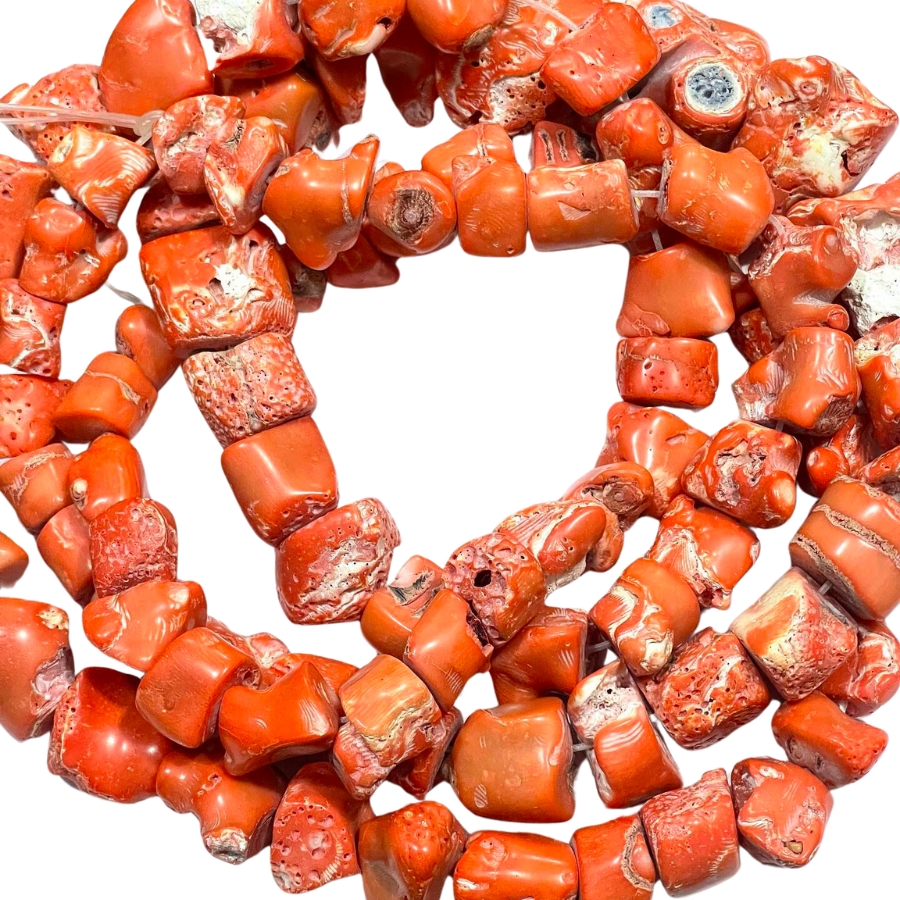
Another vibrant dark orange crystal is coral. It’s a marine treasure formed by tiny sea creatures.
It’s been used for centuries in jewelry and as a protective talisman. Ancient cultures believed coral had magical properties, using it to ward off evil and illness.
Coral’s value comes from its unique organic origin, beautiful colors, and the intricate patterns it forms. It’s often shaped into beads or carved into intricate designs for necklaces, bracelets, and other adornments.
It stands out for its natural beauty and the connection it gives us to the ocean’s wonders, making it a cherished gem.
Spessartine
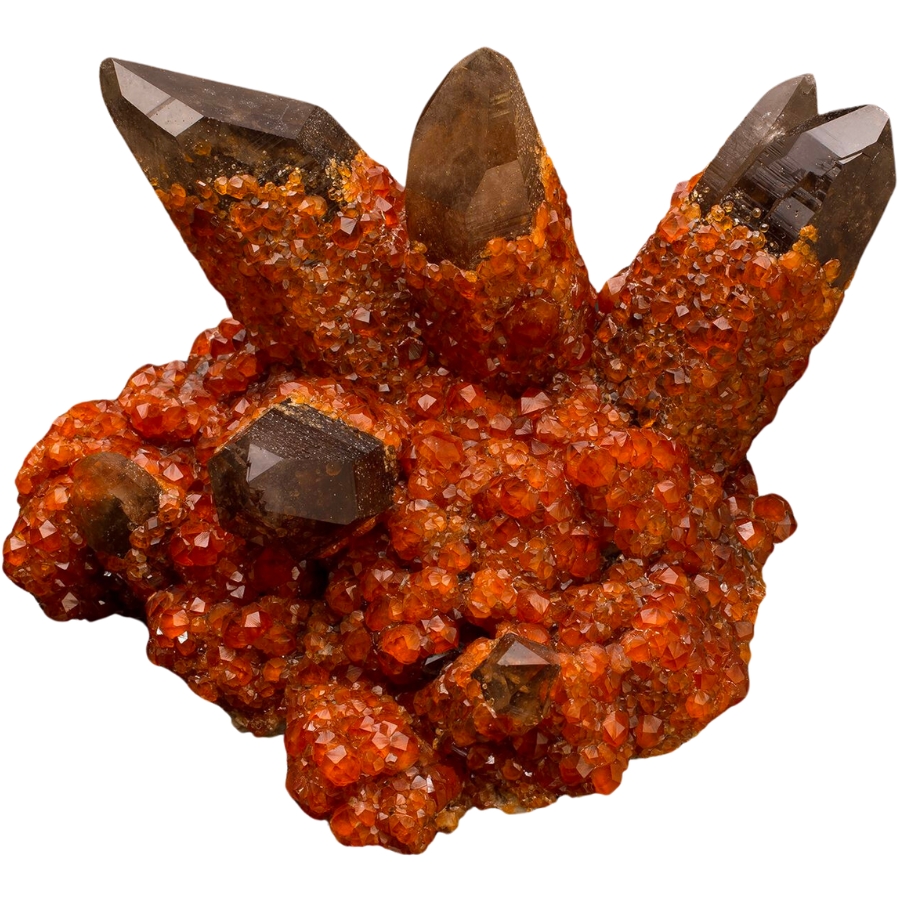
With orange red crystals, spessartine is a gorgeous wonder that was first found in Germany’s Spessart region. This member of the garnet family stands out for its bright, vivid colors.
Throughout history, spessartine has been used in jewelry, adding a splash of color to rings, necklaces, and earrings.
It’s especially loved for its striking appearance and durability, making it perfect for everyday wear.
The price of spessartine varies, but its unique beauty and rarity make it highly valued. Its rich color captures the essence of autumn leaves and sunsets, enchanting all who see it.
Light Orange Crystals
Favor subtly colored finds? You’re in for a treat as we go through some of the most stunning light orange crystals out there. Their colors range from pale apricot to soft peach, each with its own unique charm and story.
Padparadscha Sapphire
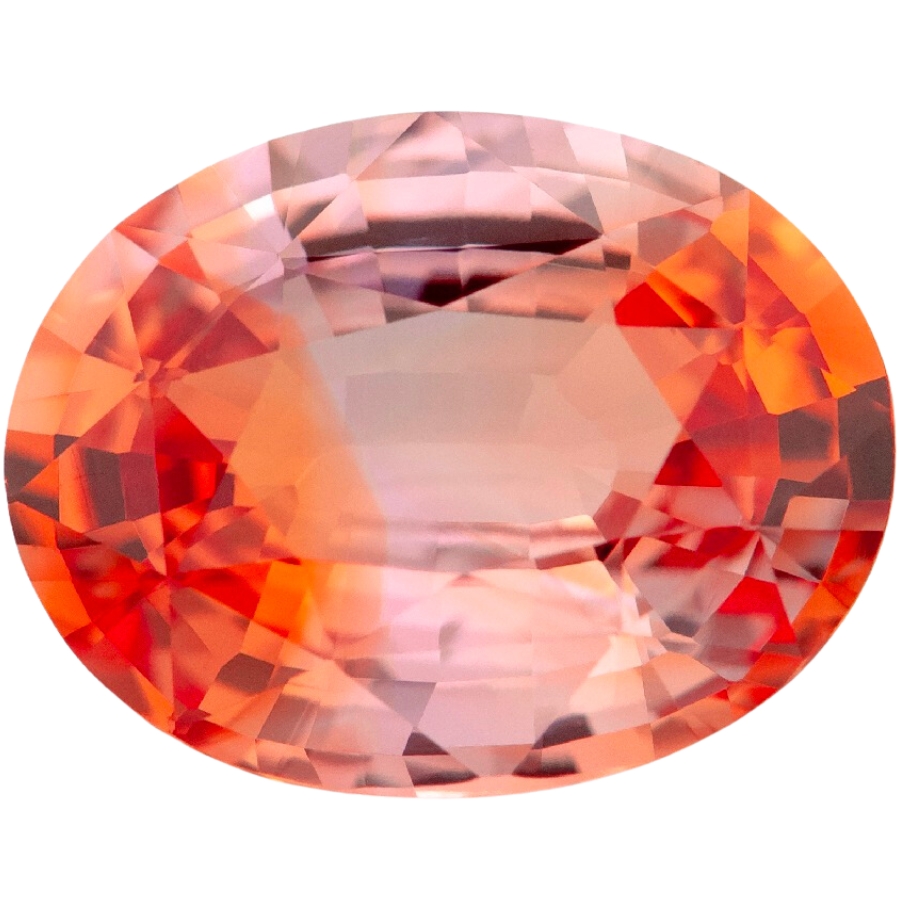
Padparadscha sapphire is a rare and enchanting gem known for its blend of pink and orange colors, like a beautiful sunset.
Its name comes from the Sinhalese word for “lotus flower,” reflecting its delicate hues. Historically, these sapphires have been treasured in Sri Lanka, where they were first found.
They’re used primarily in high-end jewelry, including rings and necklaces, adding a touch of exotic elegance.
The value of padparadscha sapphire lies in its unique color, rarity, and the romantic aura it carries as a light orange crystal. It’s one of the most sought-after gems by collectors and enthusiasts.
Mimetite
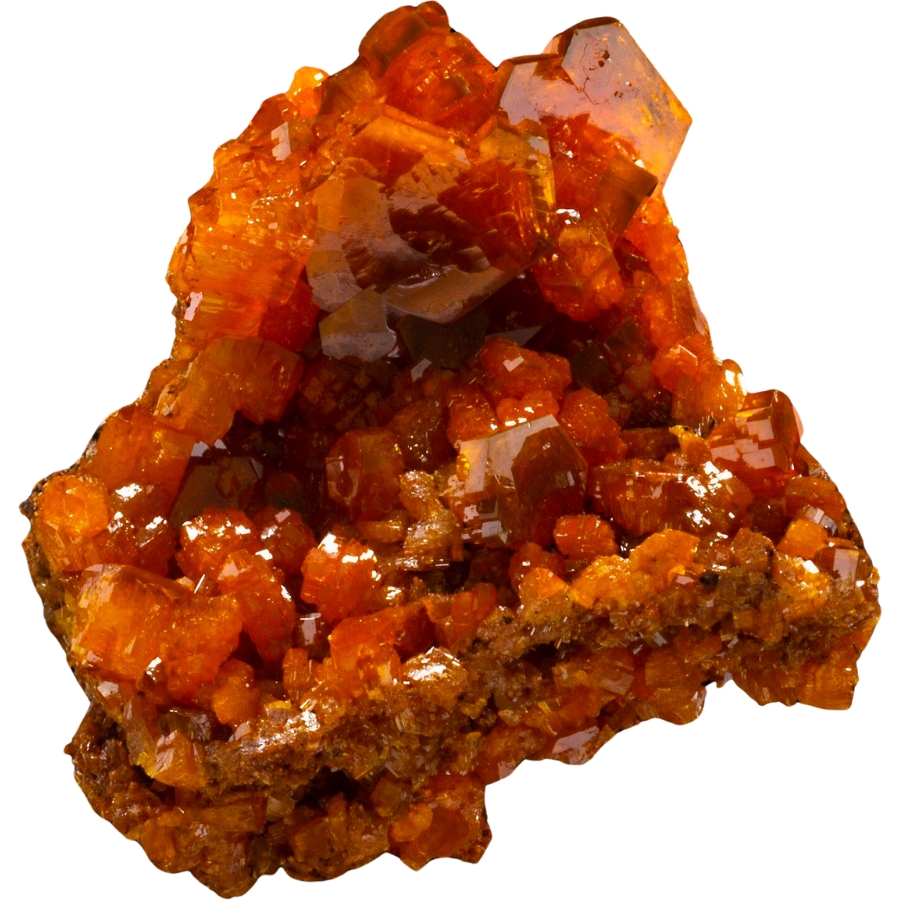
Mimetite can come in yellow and green hues, but it’s also known for its light orange crystals. It was first discovered in the 19th century.
Mimetite forms in oxidized zones of lead ore deposits, creating eye-catching, small, and shiny crystals. It’s not typically used in jewelry due to its softness.
The value of mimetite lies in its vibrant colors and the unique, barrel-shaped crystals it forms. Its distinctive appearance adds a splash of color and interest to any collection.
Clinohumite
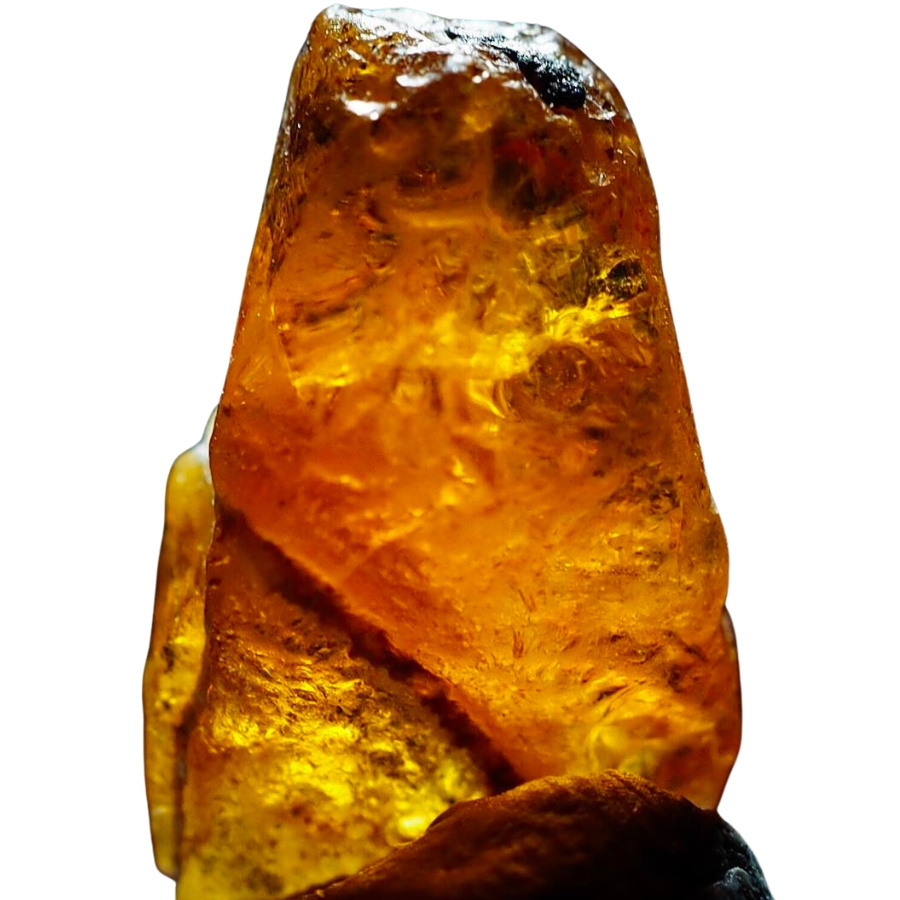
Is it the first time you’ve ever read about clinohumite? Don’t worry because it’s such a rare find, having been discovered in the 19th century only. It’s known for its lovely shades of orange and yellow colors.
This gem is usually found in places where mountains are growing, like the Pamir Mountains of Tajikistan.
Clinohumite isn’t widely used in jewelry because it’s so rare, but when it is, it makes for unique and stunning pieces.
It’s valued for its rarity and the warm, sunny colors it brings to the table. Its uniqueness and special pop of color are truly worth it.
Eosphorite
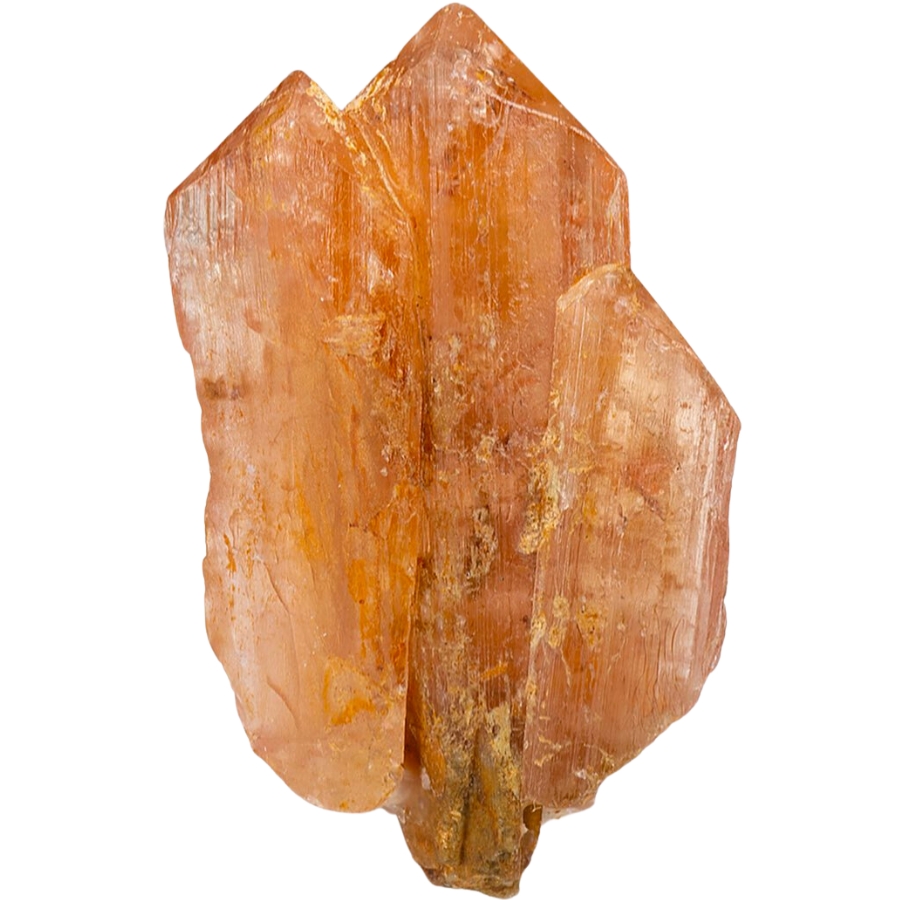
Discovered in the 19th century, eosphorite has delicate pinkish-orange colors. Its name comes from “Eos,” the Greek goddess of dawn, because of its gentle, dawn-like hues.
Eosphorite forms in granite pegmatites, a type of rock that’s often filled with rare minerals.
It’s not commonly used in everyday items or jewelry due to its softness.
However, eosphorite is highly valued for its beauty and rarity. Its translucent, prismatic crystals are a delight to see, making it a prized find for its unique appearance and the subtle charm it carries.
Hessonite
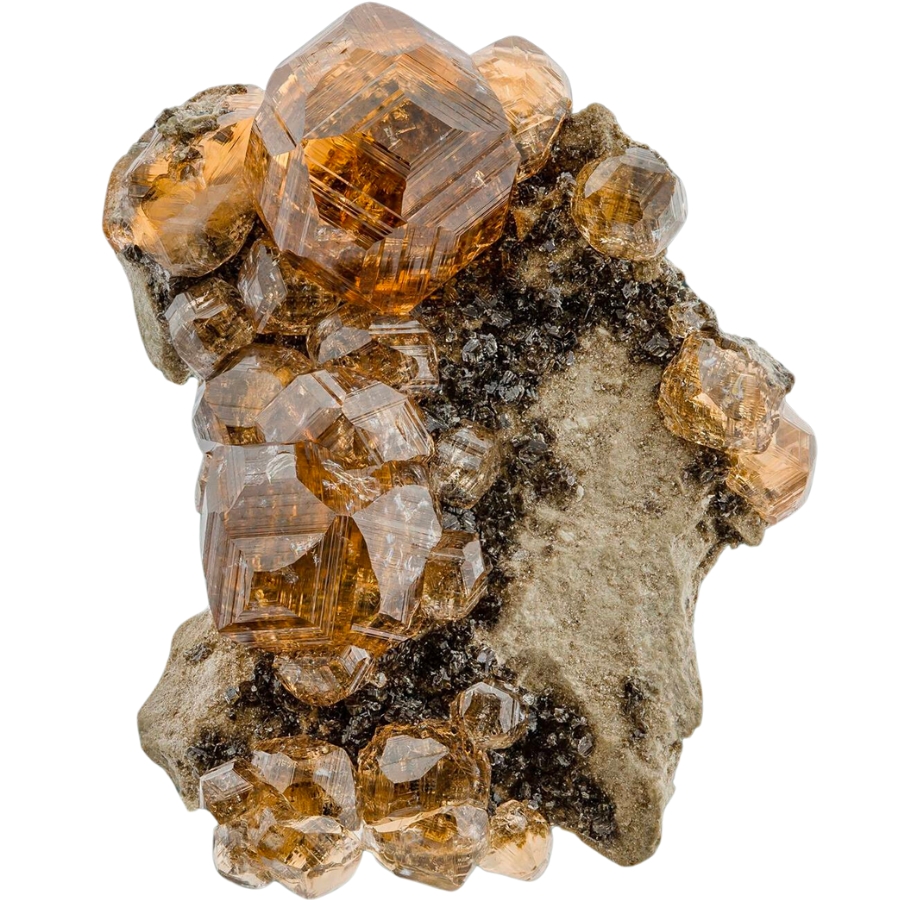
Hessonite is a type of garnet that’s known for its rich cinnamon to honey-yellow colors. It was first identified centuries ago and has been admired ever since.
Often found in metamorphic rocks, it has a special sparkle that makes it stand out. It’s been used in jewelry, like rings and pendants, bringing a warm glow to any piece.
Hessonite’s price isn’t as high as some other gems, making it a great choice for you if you love beautiful, affordable stones.
Its value lies in its lovely color and clarity, which have made it a favorite among gem and jewelry enthusiasts.
Peach Morganite
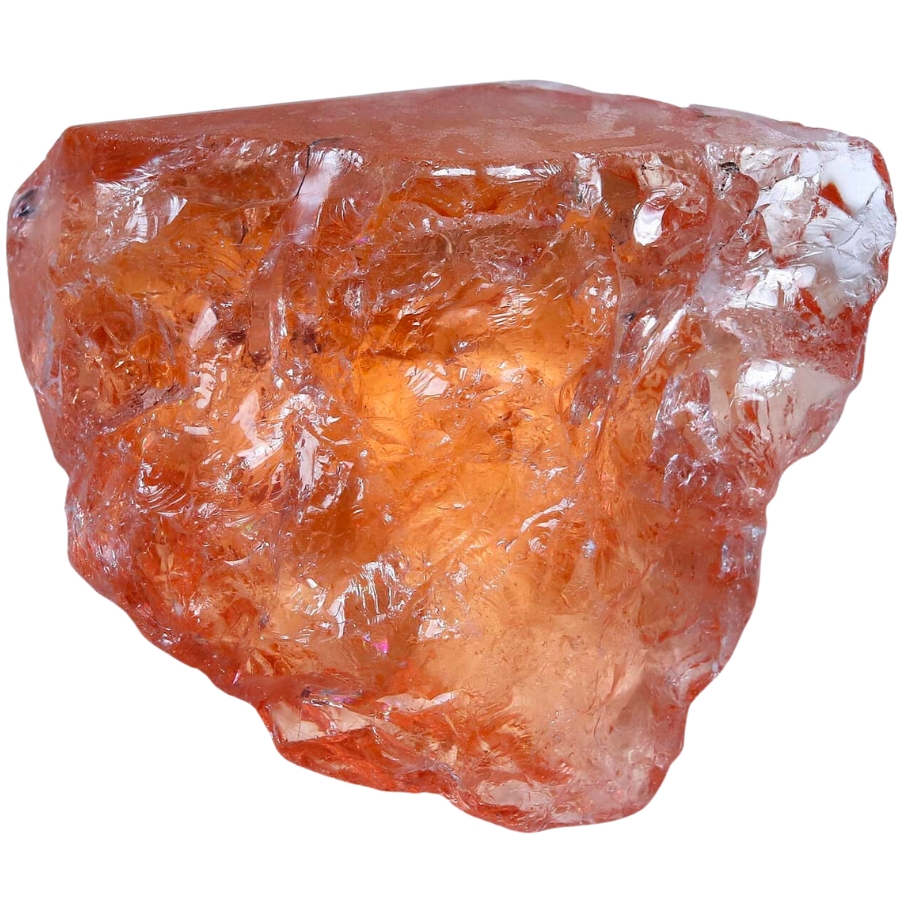
Peach morganite, a gem with soft, warm hues, is a newer discovery in the world of gemstones. It’s a type of beryl, the same family as emerald and aquamarine.
Found in shades from subtle peach to vivid salmon, it was named after J.P. Morgan, a famous banker who was also a gem lover.
Peach morganite is often used in jewelry, especially in romantic pieces like engagement rings.
It’s valued for its gentle color and sparkling clarity, making it a popular choice for those seeking something a little different from traditional gems. As a light orange crystal, it brings a touch of warmth and elegance to any setting.

